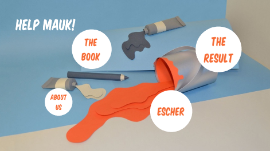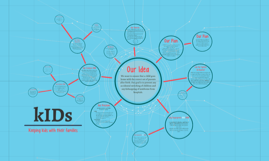kIDs Presentation
Transcript: Every person has a unique set of fingerprints, and consequently, footprints, even identical twins. Fingerprints are formed by the position of a fetus during skin development, along with the makeup and density of the amniotic fluid surrounding it. Footprints don't match 1. As the parents are checking into the hospital, take a sample of each of their DNA and fingerprint them both. 2. When the baby is born, take a sample of its DNA and record its footprint. The footprint will be used in place of a fingerprint for the baby. 3. Have all nurses and doctors in the maternity ward, along with all security guards, carry a hand-held fingerprint scanner and DNA analyzer (together in one gadget). Genetically matched baby's footprint appears Source: Children's Oncology Group Cell Culture and Xenograft Repository Website Regina Phalange was a first-time mom. She had just given birth to a beautiful, bouncing baby boy named Bernie. After two days in the hospital, she was more than ready to go home. She went to the nursery to get her son so that they could leave. Her husband was getting the car. She grabbed the baby that she thought was hers, and went to the nurse. "I'm ready to leave, ma'am." Here's How It Works Our Science: DNA Our Science: Fingerprints Can Our System Be Beaten? We want to ensure that a child goes home with the correct set of parents after birth. Our goal is to prevent any accidental switching of children and any kidnapping of newborns from hospitals. Why Fingerprints AND DNA? Footprints match Source: Explain that Stuff! These are some types of minutiae The number of VNTR repeats at specific locations on a chromosome, which are called loci, varies from person to person. Determining the number of VNTR repeats at specific loci allows for a DNA profile to be created for an individual. The more loci examined, the more accurate the profile. While we strongly believe in our plan, we recognize that there are ways to beat our system. If someone managed to figure out a way to provide the biological parent's DNA and fingerprint, they could take a child that is not theirs; however, it is highly improbable that they would be able to provide both measures. (2007, July 31). UNTHSC Homepage - Telephone: 817.735.2000. Center for Human Identification. Retrieved January 3, 2015, from http://hsc.unt.edu/departments/pathology_anatomy/dna/Parentage/FAQ/FAQ.cfm#1 (2008, ). Children's Oncology Group Cell Culture and Xenograft Repository Website. Children's Oncology Group Cell Culture and Xenograft Repository Website. Retrieved January 3, 2015, from http://www.cogcell.org/clid.php Harris, T. (n.d.). Computer - HowStuffWorks. Fingerprint Basics - How Fingerprint Scanners Work. Retrieved January 3, 2015, from http://computer.howstuffworks.com/fingerprint-scanner1.htm Our Science: DNA These are some types of minutiae Our Science: DNA Our Plan Why Fingerprints AND DNA? Baby doesn't leave and the hospital takes action depending on the situation Our Science: DNA Our Precision Your Privacy (n.d.). EKEMP---POS Terminal,NFC, Biometric,Fingerprint Handheld terminal, Android POS Terminal,Industrial PDA,Mobile Computer,Barcode Scanner,Bicycle Sharing system,Lottery System Solution,Toto Sports betting solutions.All in One Handheld PDA (X6). Retrieved January 3, 2015, from http://www.ekemp.com.cn/products_info.php?id=22 (n.d.). FBI — Homepage. FBI — DNA. Retrieved January 3, 2015, from http://www.fbi.gov/about-us/cjis/fingerprints_biometrics/biometric-center-of-excellence/modalities/dna (n.d.). Learn Genetics. What is Heredity?. Retrieved January 3, 2015, from http://learn.genetics.utah.edu/content/inheritance/intro/ There are two different kinds of fingerprint scanning: optical and capacitance. Our scanners will be optical scanners. Optical scanners use charge-coupled devices (CCDs) to take a digital photograph of the fingerprint. The scanner's computer is able to analyze the image and uses special software to turn the image into a binary code. The scanner will be similar to this, but the actual scanner portion would be big enough to scan a newborn's foot. The computer focuses on the minutiae, and measures the distances and angles between the locations of the minutiae to identify the print instead of using the entire print. This information is then coded and stored in the computer. The only people who will have information are medical staff and security guards. The medical staff will treat it as any other part of your medical information, and it will be safe-guarded. The portable fingerprint scanners/DNA analyzers will be biometrically protected, with the medical staff being required to scan their own finger before using it. All medical staff and security personnel will go through training before being allowed to use the technology, ensuring that they will know how to properly use and safeguard the technology and personal information. Our Science: DNA Source: Children's Oncology Group Cell Culture and Xenograft Repository Website Baby's foot

















